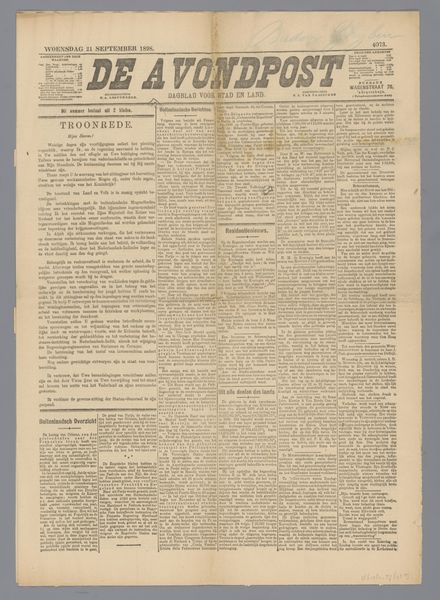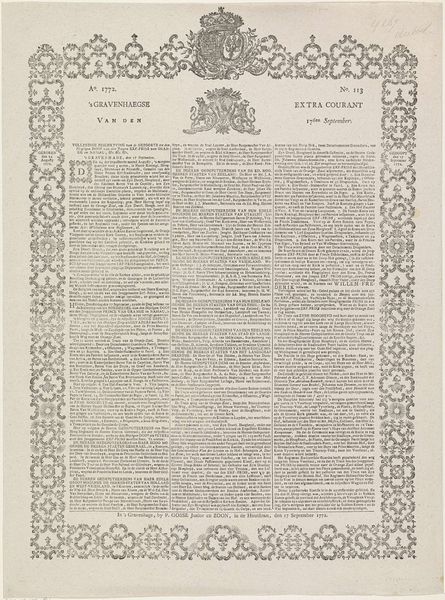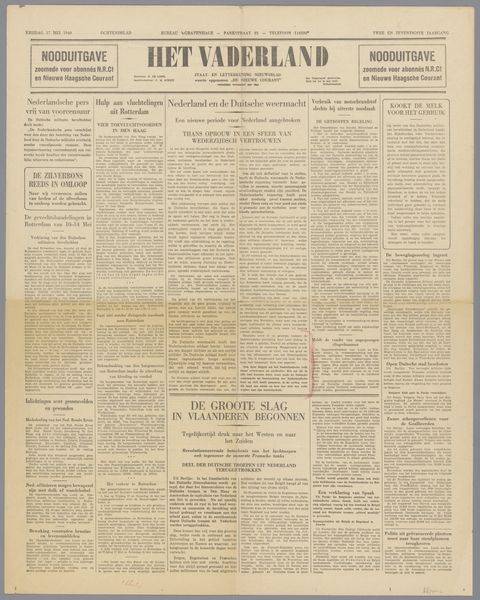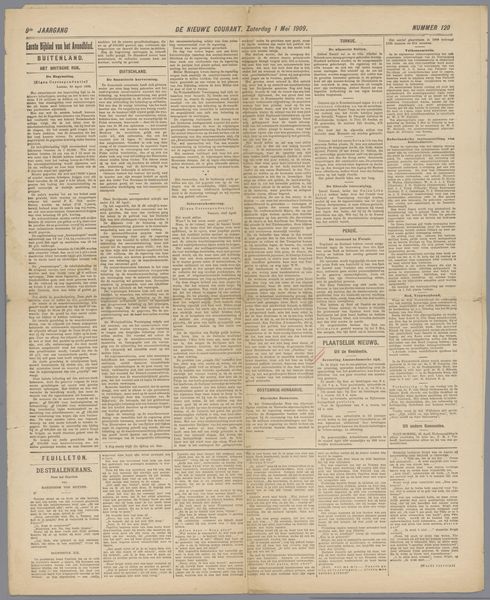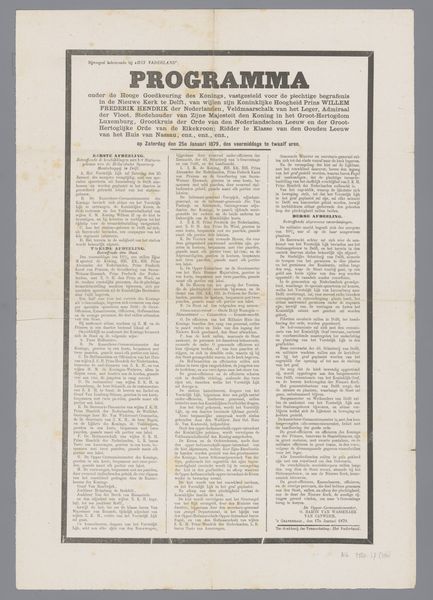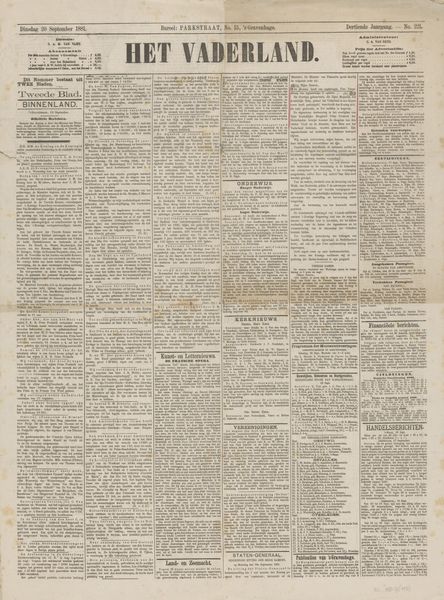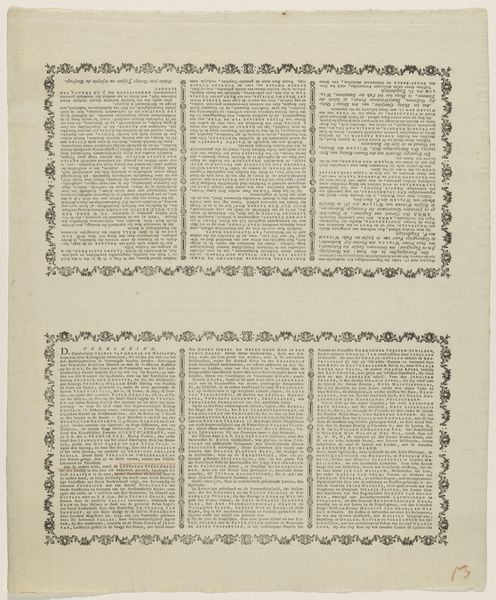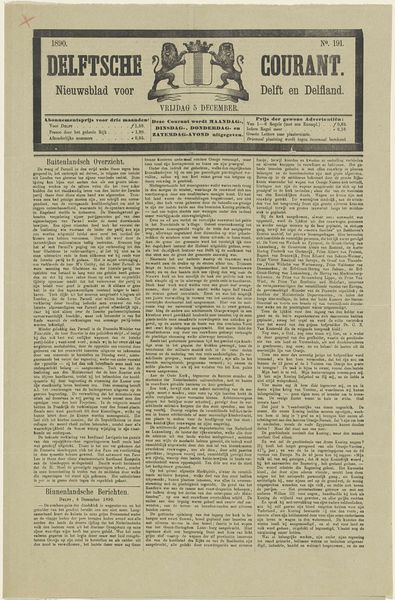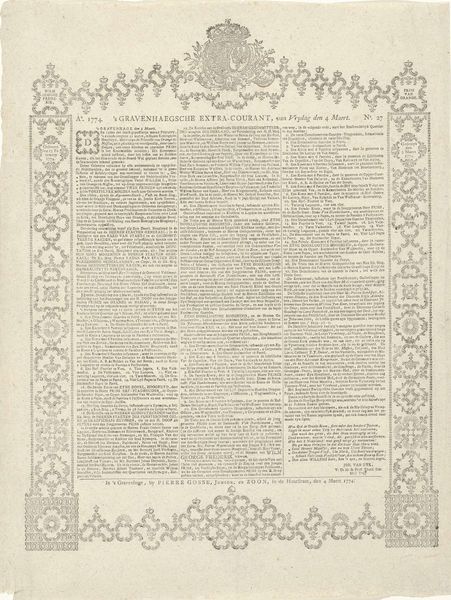
Pagina van het Algemeen Handelsblad van 7 februari 1901 1901
0:00
0:00
careladolphlioncachet
Rijksmuseum
graphic-art, print, paper, typography, poster
#
graphic-art
#
type repetition
#
aged paper
#
toned paper
#
art-nouveau
#
parchment
# print
#
thick colouring
#
old engraving style
#
woodcut effect
#
hand drawn type
#
paper
#
tea stained
#
typography
#
golden font
#
poster
Dimensions: height 600 mm, width 453 mm
Copyright: Rijks Museum: Open Domain
Curator: Here we have a fascinating piece of graphic art, a page from the Algemeen Handelsblad dating back to February 7th, 1901, created by Carel Adolph Lion Cachet. It's currently held in the Rijksmuseum. Editor: Gosh, it's like looking at something unearthed from a time capsule. The overall tone of the aged paper, the intricate Art Nouveau border—it feels weighty, serious, yet undeniably elegant. Curator: Absolutely. Consider the context: newspapers in 1901 served not just as news outlets but also as potent conveyors of cultural values and political narratives. The artist was working in a time of immense transformation in printing technology. Editor: You can really sense that transformation. The "woodcut effect" is so distinctive. The text itself, that gorgeous "golden font," feels almost illuminated. I'm picturing a serious gentleman with a waxed mustache intently reading this with his morning coffee! Curator: The choice of typography is far from arbitrary. Cachet consciously references historical printing traditions, maybe trying to lend gravitas and historical weight to even the most ephemeral of newsprint. Editor: The framing itself feels rather...ceremonial. Almost monarchical. Those regal crests bookending the title – they definitely make it feel like you are in the presence of official decree! I do wonder about the headline though, "De Groote Dagh Gaet In" – “The Great Day Arrives” – that almost gives it a mystical, theatrical feel. Curator: It could be tied to specific event happening at the time, reflecting a larger societal mood or hope, but also could refer to daily commerce and trade. Editor: Knowing this was meant for mass consumption in some ways diminishes the impact of how much work Cachet has put in to the illustration around it. The idea that his skills are put to the service of everyday information, feels somewhat subversive, doesn't it? Curator: That's a very relevant insight. It encourages us to consider both the overt function of the print—to inform—and the subtler, persuasive effect of its aesthetic presentation and symbolism. Editor: Seeing art used to communicate at such a mass scale feels particularly relevant now, considering our engagement with constant news cycles online. Thinking about it like that certainly changes how I view Cachet's piece.
Comments
No comments
Be the first to comment and join the conversation on the ultimate creative platform.
